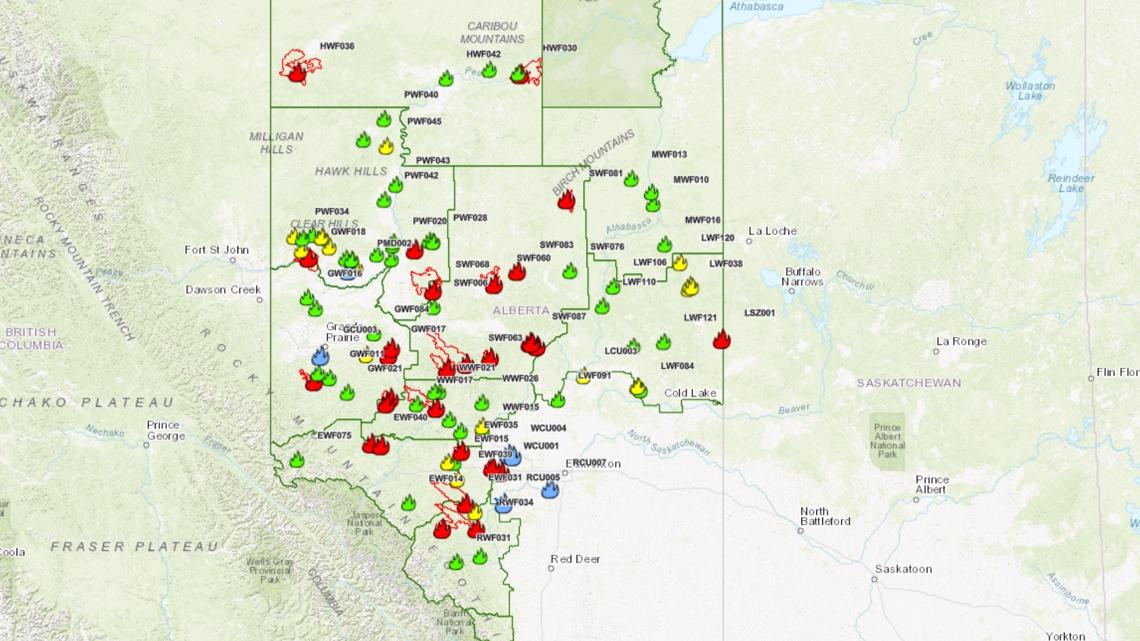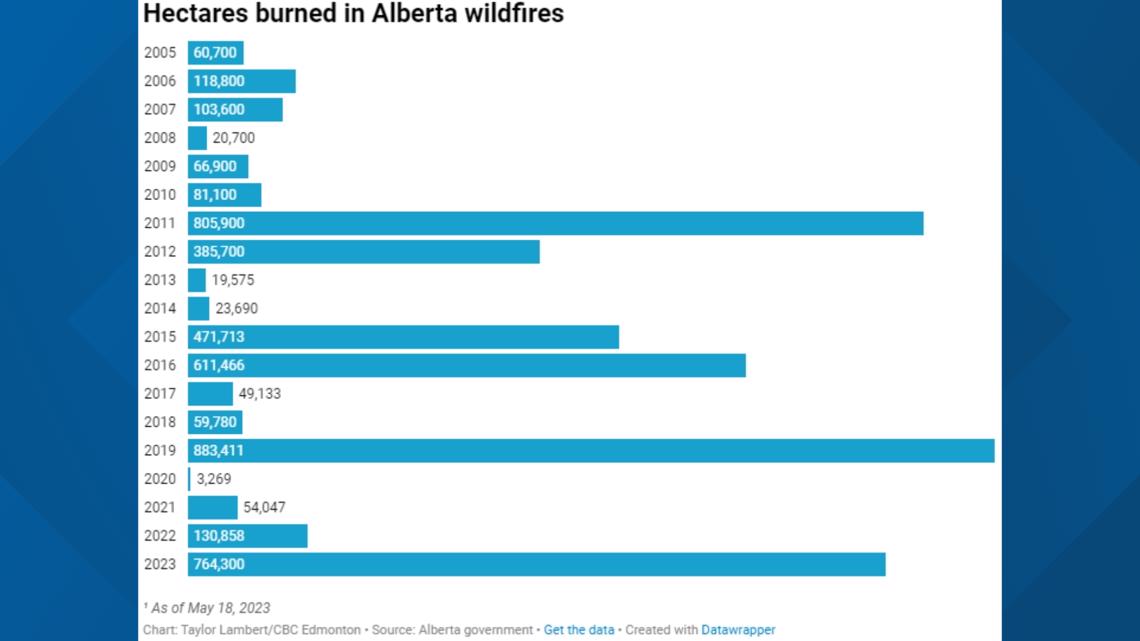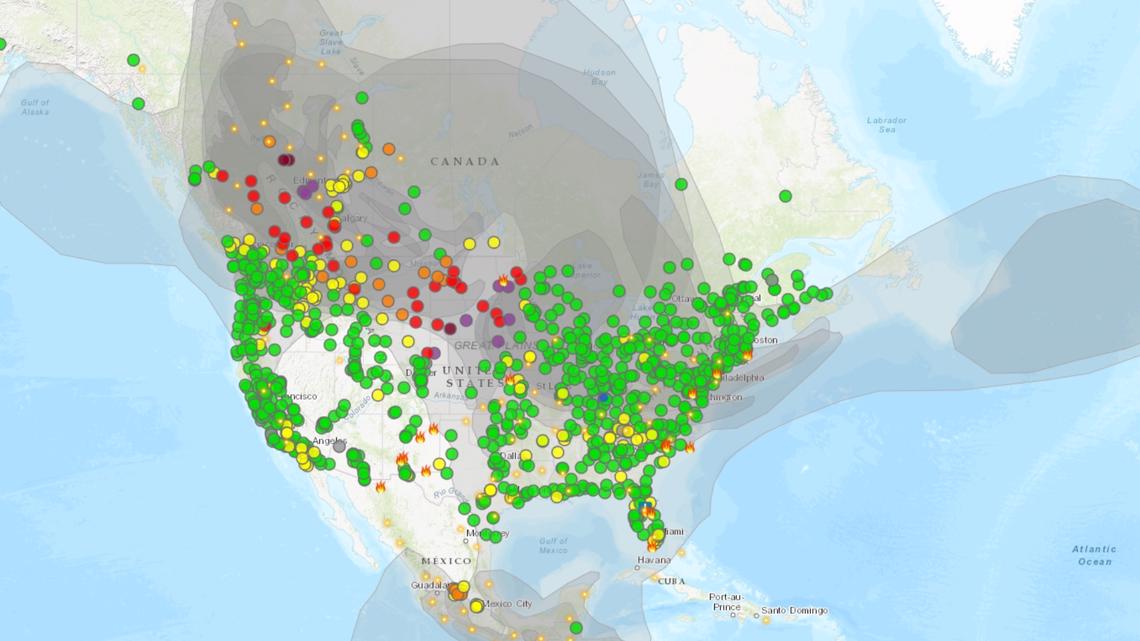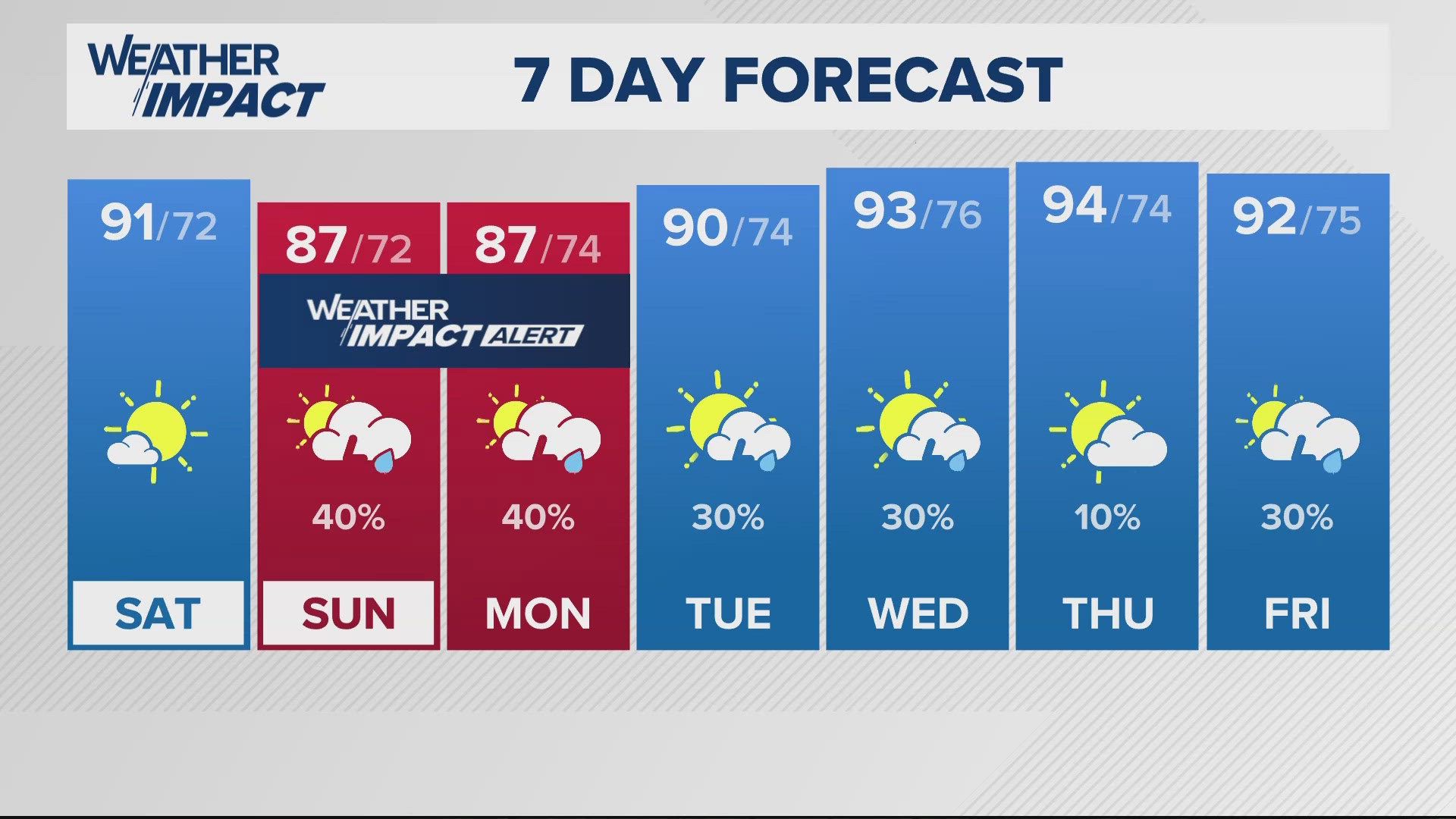LOUISVILLE, Ky. — If you’ve noticed a hazy sky in the daytime and more colorful sunsets, it’s not because of pollen or pollution.
Smoke from Canadian wildfires is blowing southward into the United States.
Historic wildfires in Canada – particularly the Alberta province - are straining firefighters and resources.
According to the Canadian Interagency Forest Fire Centre, 92 separate fires are ongoing in Alberta as of May 18, with 26 of them being listed as “out of control.”


The fires are so large and numerous that over 1,000 firefighters from other provinces and the United States have been brought in to help.
Over 10,000 residents across the province have been forced to evacuate.
As of May 18, 2023, over 764,000 hectares of land have burned in Alberta – the largest since 2019 when nearly 883,500 hectares burned the entire year. This year has already seen the third-highest hectares burned since 2005.


Canadian wildfire officials say they will likely be fighting the blazes all summer long, which means frequent smoke making its way into the United States.
Rain would certainly help to put out the infernos, but unfortunately, a generally hot and dry summer is expected to the north.
A large reason why the fires have been so intense is because of unusually dry weather and exceptionally windy conditions. The dry brush acts as fuel while the wind helps to fan the flames letting them grow and burn with intensity.
Although most fires are in Alberta, there are numerous others in the neighboring provinces of British Columbia and Saskatchewan.
Smoke from the fires has extended as far south as the Carolinas and as far east as the middle of the Atlantic Ocean.


For now, smoke in the Ohio Valley is very high in the atmosphere and not reaching the surface which is not impacting our air quality directly.
So much smoke will likely cause more colorful sunsets for the foreseeable future, especially if a denser plume blows southward and we have an extended dry period.
Atmospheric wind patterns look favorable to bring occasional smoke plumes as far south as the Ohio Valley.
The northern third of the United States, especially those areas nearest the Canadian border, are most likely to see negative air quality.
Make it easy to keep up-to-date with more stories like this. Download the WHAS11 News app now. For Apple or Android users.
Have a news tip? Email assign@whas11.com, visit our Facebook page or Twitter feed.



